Some months ago I came across the term “cane” in reference to clay. Curiosity lead me to “just google it” as my grandson would say when he was about three and I did not know the answer to one of his many questions. According to the website of a polymer clay company, Sculpey, the definition is:
cane \’kan\ n — a polymer clay rod of two or more colors; the colors inside the rod are constructed in such a way that when the rod is cross-sectioned at any point, a 2 dimensional pattern is revealed.
When my sister asked if she could bring her clay and tools for us to play with on our vacation, I enthusiastically agreed. After reading a couple of tutorials, I started experimenting with making canes. This is the result of my first experiment: I was pretty excited about the process and the results, but after doing several more this became my least favorite of everything I made on vacation.
I was pretty excited about the process and the results, but after doing several more this became my least favorite of everything I made on vacation.
Melinda decided to give it a try and made these cute beads: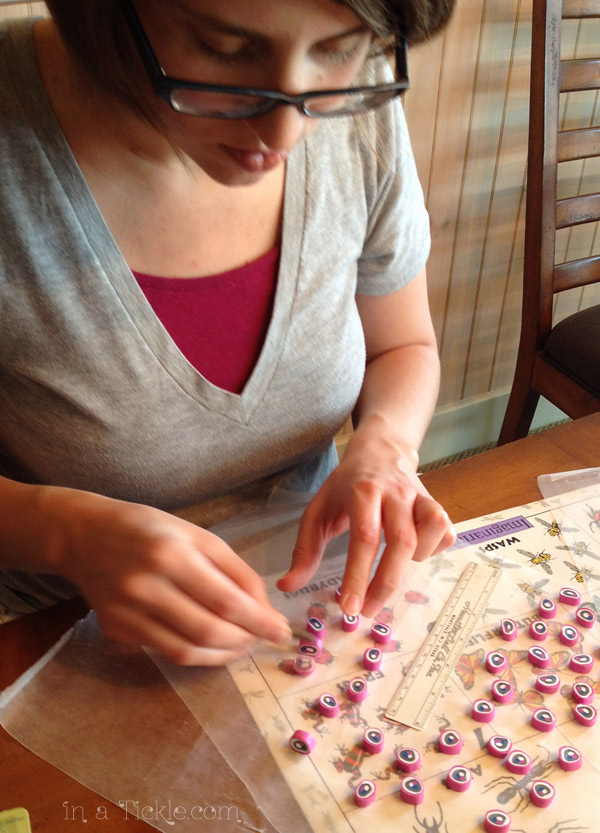
Next I tried making spiral canes and combining them into one cane. I sliced part of it very thin and layered the pieces onto a pendant. Then I reduced the cane even smaller and sliced off beads. The scrap pieces from the ends were rolled into small round beads.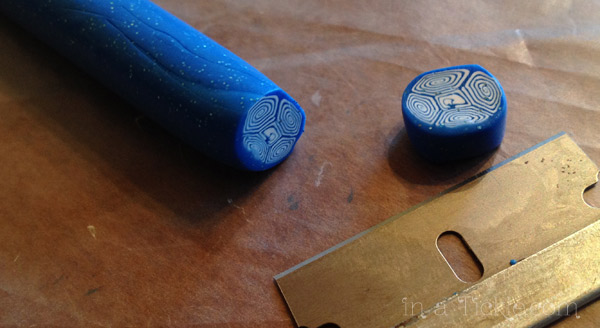
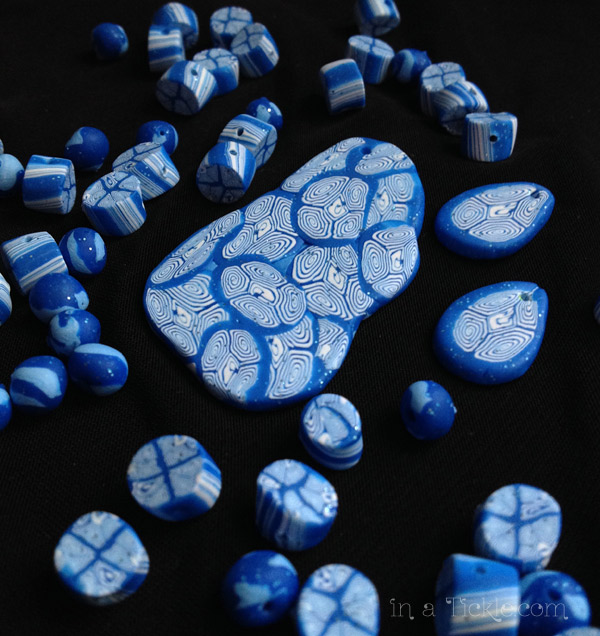 I was trying to look up some videos for ideas of more canes to put together but our internet connection at the time was sporadic. I managed to watch almost all of this tutorial before losing connection and was excited to give it a try.
I was trying to look up some videos for ideas of more canes to put together but our internet connection at the time was sporadic. I managed to watch almost all of this tutorial before losing connection and was excited to give it a try.
Mokume Gane was a new term to me, but it was fascinating. The original process is actually hundreds of years old and started in Japan. It was the layering of mixed metals to form a laminate of unique wood grain patterns. Here’s a little history lesson. Using a layering/cutting technique with polymer clay achieves a look with similar characteristics to the original metal process. Here’s what I made with this technique: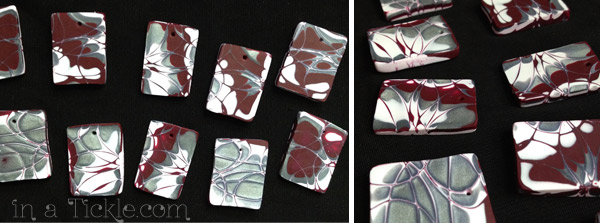 Now I was hooked. I finally saw another tutorial and learned that poking holes with toothpicks and various other sized pokers produced more unique patterns.
Now I was hooked. I finally saw another tutorial and learned that poking holes with toothpicks and various other sized pokers produced more unique patterns.
And this is what I came up with in my experimentation:
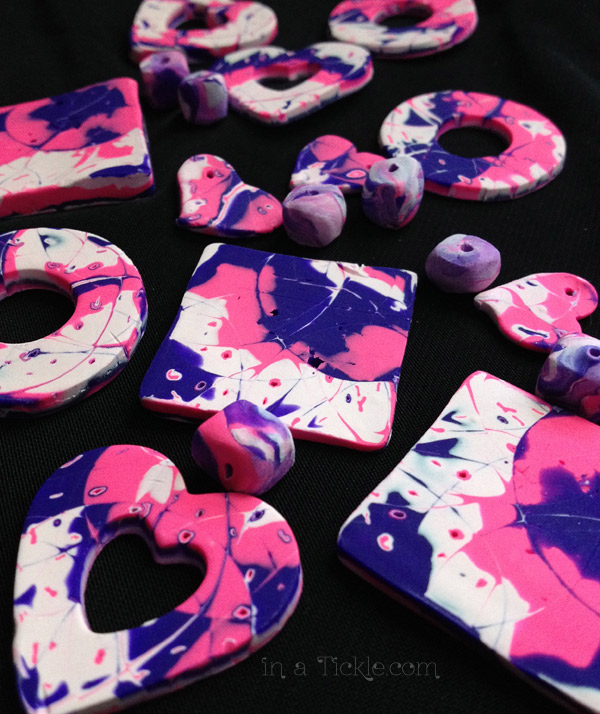
 I wanted to make a landscape cane (no clue how to do it) but I tried. It didn’t look right so after slicing the cane, I layered those pieces and cut and poked into the layers and came up with something that looked like a fish swimming in the lake. You never know what you might create! I flattened out the rest of the pieces, rolled them up and cut them into beads. No clay goes to waste.
I wanted to make a landscape cane (no clue how to do it) but I tried. It didn’t look right so after slicing the cane, I layered those pieces and cut and poked into the layers and came up with something that looked like a fish swimming in the lake. You never know what you might create! I flattened out the rest of the pieces, rolled them up and cut them into beads. No clay goes to waste.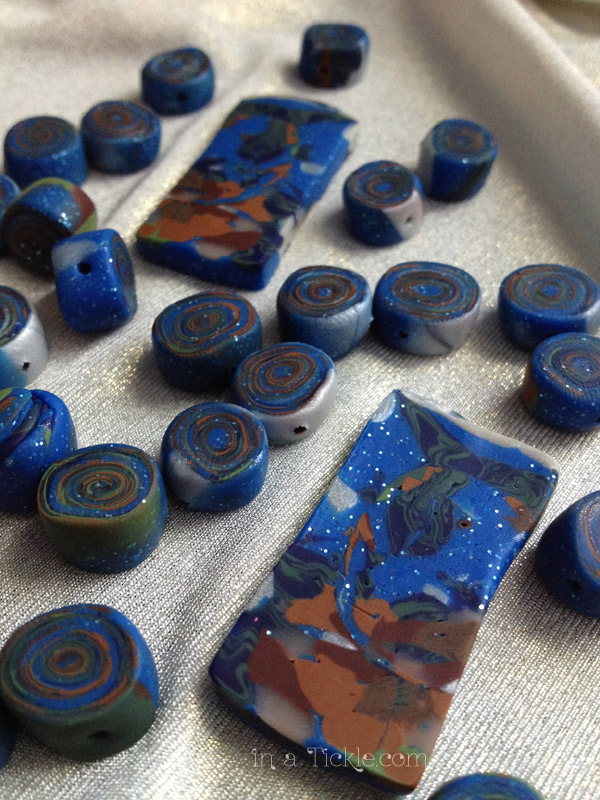 Now I have several bags of handmade beads and pendants. I guess the next thing I get to learn is how to make jewelry. It’s another one of those things that looks overwhelming when I look at the isles of jewelry making supplies and beads, but I will study or find someone who knows how to make jewelry to get me headed in the right direction. After all, I still want to make more clay beads and pendants. There are so many more creative techniques to try!
Now I have several bags of handmade beads and pendants. I guess the next thing I get to learn is how to make jewelry. It’s another one of those things that looks overwhelming when I look at the isles of jewelry making supplies and beads, but I will study or find someone who knows how to make jewelry to get me headed in the right direction. After all, I still want to make more clay beads and pendants. There are so many more creative techniques to try!
Did you play with play-doh when you were a child? Playing with polymer clay may take you back to those fun memories. There’s just something therapeutic about squishing the clay between your fingers. How about giving it a try?
